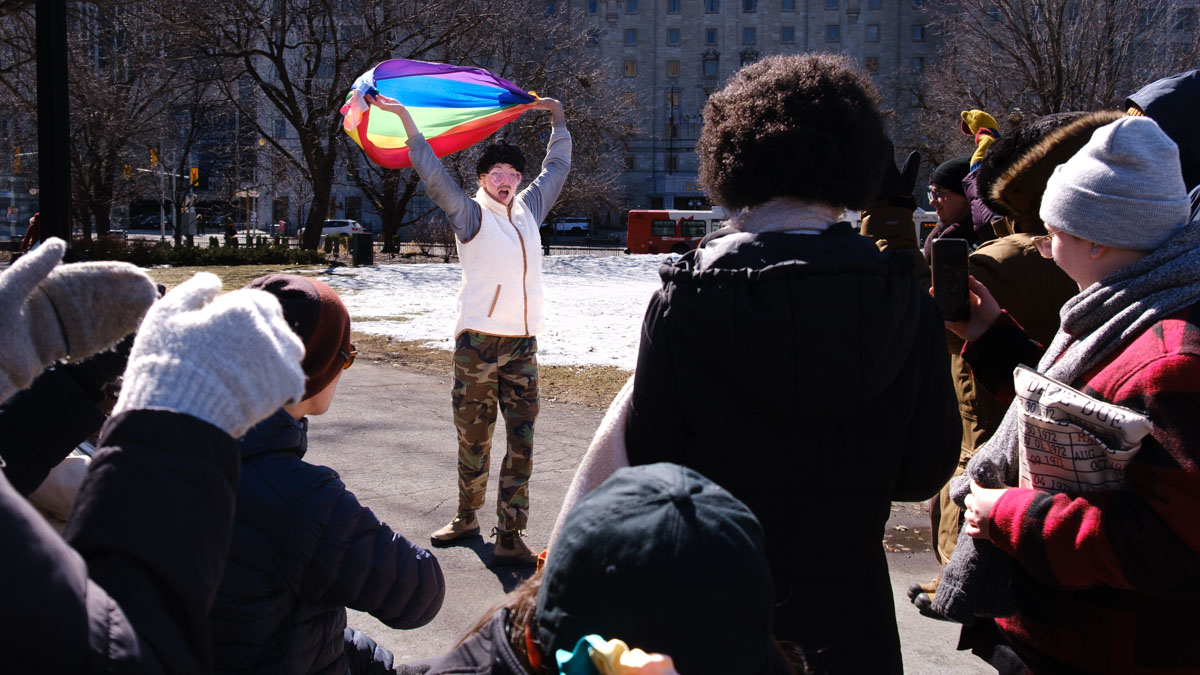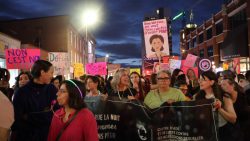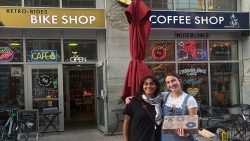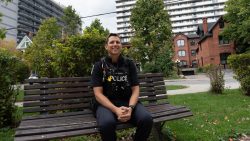Wearing a cowboy hat, a drawn-on moustache and glittery fairy wings, drag artist Morgan Mercury strolls around downtown Ottawa sharing stories of 2SLGBTQ+ trailblazers who once called the city home.
As the founder and guide of Fairy Cowboy Tours, Mercury is marking one year of 2SLGBTQ+ history walking tours downtown. The tour highlights the stories behind 2SLGBTQ+ landmarks and historic spaces as spots of celebration, activism and resistance.
“The medium of drag to present queer history makes a lot of sense in terms of what the history is representing — the resistance to these binaries, the joy of being a queer person and loving other queer people,” Mercury told Capital Current.
Weaving through the core while incorporating stories, dramatic readings and performances, the tour stops at locations such as the former Bank Street gay village and the We Demand mural, which commemorates Ottawa’s first protest for gay rights.

Mercury said Ottawa’s history is particularly interesting because of the public servants who concealed their identities to preserve their jobs.
Surveillance and identification techniques were developed by the federal government during the Cold War, since ‘homosexual’ people were considered more susceptible to revealing government information to Russian spies.
“Being the scene of government, a lot of literature is talking about how people lived double lives,” Mercury said. “There was such fear and needing to hide one’s identity as part of living here.”
“It’s interesting to see how even within that context (of surveillance), there is still so much going on,” he added. “There are still these underground bars, there are still drag queens, there are still people who are living as their queer selves.”
In the 1970s, RCMP officers would stake out the Lord Elgin Hotel, which was a popular gathering spot for 2SLGBTQ+ public servants at the time, says Mercury. Officers would try to identify people by looking through eye holes cut out of newspapers.
After telling the story to the tour group with the Lord Elgin Hotel as a backdrop, Mercury often performs a drag number to put a humorous twist on the storyline.
“It’s just so cartoon-y and so drag king fodder, so I do a number there to showcase that history,” he said.
Mercury said he also draws from the personal experiences people share on the tour. He said he once ran a tour for a group of 2SLGBTQ+ seniors, some of whom met their life partners at the old underground bars in the gay village.
“I love getting to hear these adults tell these stories about their youth that they haven’t felt safe to share in other contexts,” Mercury said. “It just really hit home in terms of how important it is to these people when they’re retired and maybe don’t feel seen or connected in the same way.”

As for younger attendees, Mercury hopes they feel inspired “and come out of the tour feeling appreciative of the work that has been done.”
“What I really want people to get out of it is seeing themselves as part of the timeline and taking inspiration, in whatever way that means them, to co-create in what is next,” Mercury said.
Sabrina Gauthier, who took the tour on March 23, said she felt empowered learning about the history of the city she lives in.
“It’s important to know the history so that we know the people who fought for these rights and to know what they went through and how we can continue fighting for them today,” she said.
Anna Rayner-Grignon, who also attended the March 23 tour, added it’s important to draw parallels between past and present forms of celebration and resistance.
“Seeing how other people lived and loved and had joys, even when things were very difficult, gives some hope and staves off that despair that’s easy to sink into these days,” she said.
To end the tour, Mercury asks the group what they envision a queer Ottawa will look like in the next five, 10 or 25 years.
While many voice concerns about U.S President Donald Trump’s harmful views on transgender rights, Mercury said these tours highlight stories of resistance to make them “harder to be erased and shut down.”
“These tours present a nice little way to counteract these big, scary things that feel super out of control within the Ottawa and Canadian context,” Mercury said. “There’s some calmness in the idea of, ‘I’m a cowboy fairy and we’re going on a walk.’ It feels like something steadying.”




